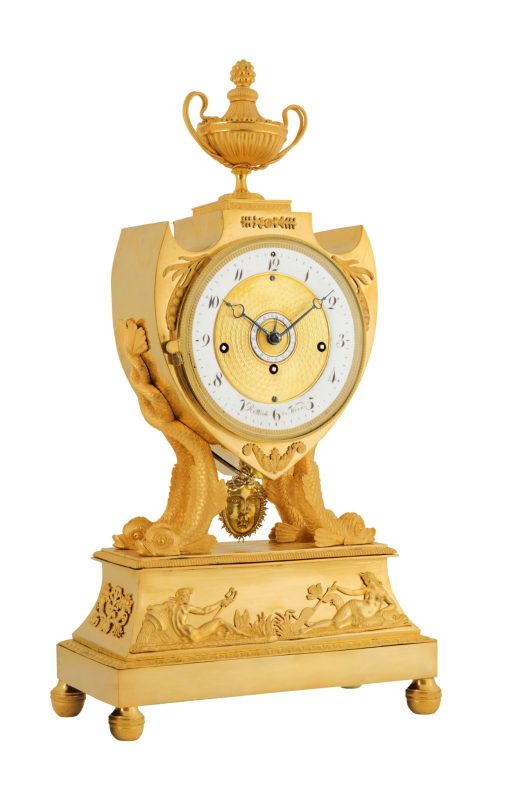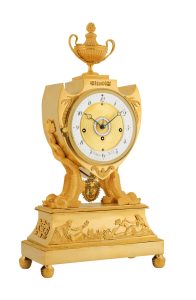Vienna, first quarter of the 19th century
- signed
- “Rettich in Wien”
- Clockmaker
- Anton Rettich,
- Vienna, mentd. 1799, master 1800, † 1833
- Case
- engraved ormolu, ormolu mounts, clock case supported by two pairs of entwined dolphins
- Dial
- engine turned ormolu dial, enamel chapter ring and subsidiary dial for date
- Movement
- anchor escapement, Viennese grande sonnerie on wire gongs, repeater, turn-off for strike, indication of date
- Height
- 17 in
In Greco-Roman mythology, dolphins were seen as highly esteemed and clever creatures. They were thought to rescue people in distress at sea, act as messengers of the god Neptune (Greek: Poseidon) and were used by the Nereids (sea nymphs) and the goddesses Venus and Demeter as mounts and draught animals. In the Middle Ages, they became a popular heraldic motif. (This helped the heir to the French throne to obtain his title, since the “Dauphin” – literally dolphin – held the county of Albon, whose coat of arms was adorned with the marine mammal).
In the case of this magnificent Viennese Empire clock, two intertwined pairs of dolphins act as support for the shield-shaped movement case. The maritime theme is taken up in the fine ormolu mounts, which depict the sea god Neptune and his wife Amphitrite. According to legend, Neptune sent out a dolphin, which wooed the beautiful sea nymph for him and eventually brought her to its master on its back. Out of appreciation, Neptune then created the constellation Delphinus.
The movement of this timepiece was created by the famous clockmaker Anton Rettich, who repeatedly chose ormolu cases with a maritime theme for his outstanding movements. An almost identical clock, also made by Rettich, can be found in the Sobek Collection in the Geymüller castle in Vienna (inv. no. 1527) and is illustrated in K. Maurice’s standard work “Die Deutsche Räderuhr”.

